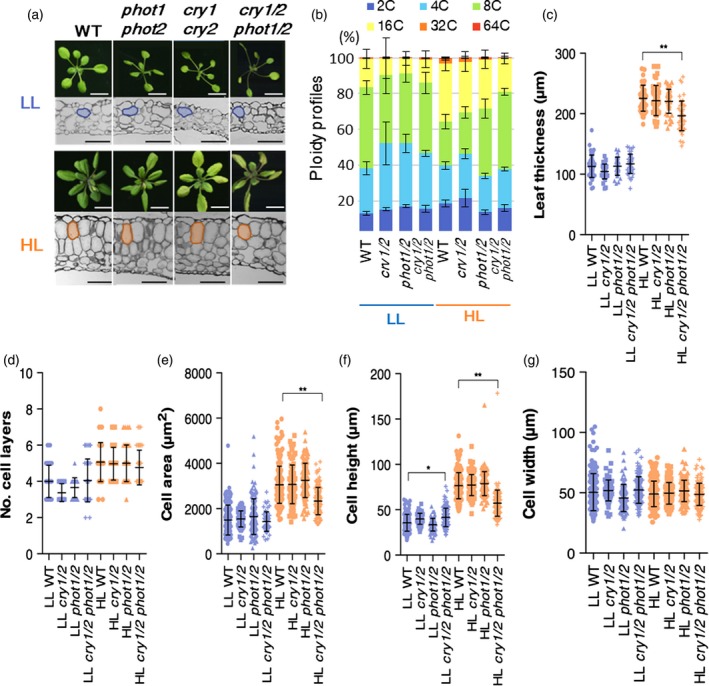Figure 4.

Leaf morphology and ploidy levels of blue‐light receptor mutants under low light (LL) or high light (HL) conditions. (a, b) Wild‐type (WT, gl1) and mutant plants with defects in blue‐light sensing, phot1 phot2 double mutant (phot1/2), cry1 cry2 double mutant (cry1/2), and cry1 cry2 phot1 phot2 quadruple mutant (cry1/2 phot1/2), were cultivated under LL and HL conditions for 21 days. (a) Rosette morphology (upper panels) and leaf cross sections (lower panels) of the first pair of foliage leaves in each genotype. Typical mesophyll tissue cells are outlined at each stage. (b) Ploidy profiles of leaf blades of shade and sun leaves of WT and mutant plants. Values represent means ± SDs (n = three plants). (c) Leaf thickness, (d) cell layer number, (e) palisade cell area in leaf transverse section, and (f) cell height, and (g) cell width in first layer of palisade cells. Values represent means ± SDs (n = 4 or 5 plants). Asterisks indicate statistically significant differences by Sidak's multiple comparison test (P < 0.0001**, 0.001 < P < 0.01*). Scale bars: white bars, 1 cm; black bars, 100 μm.
